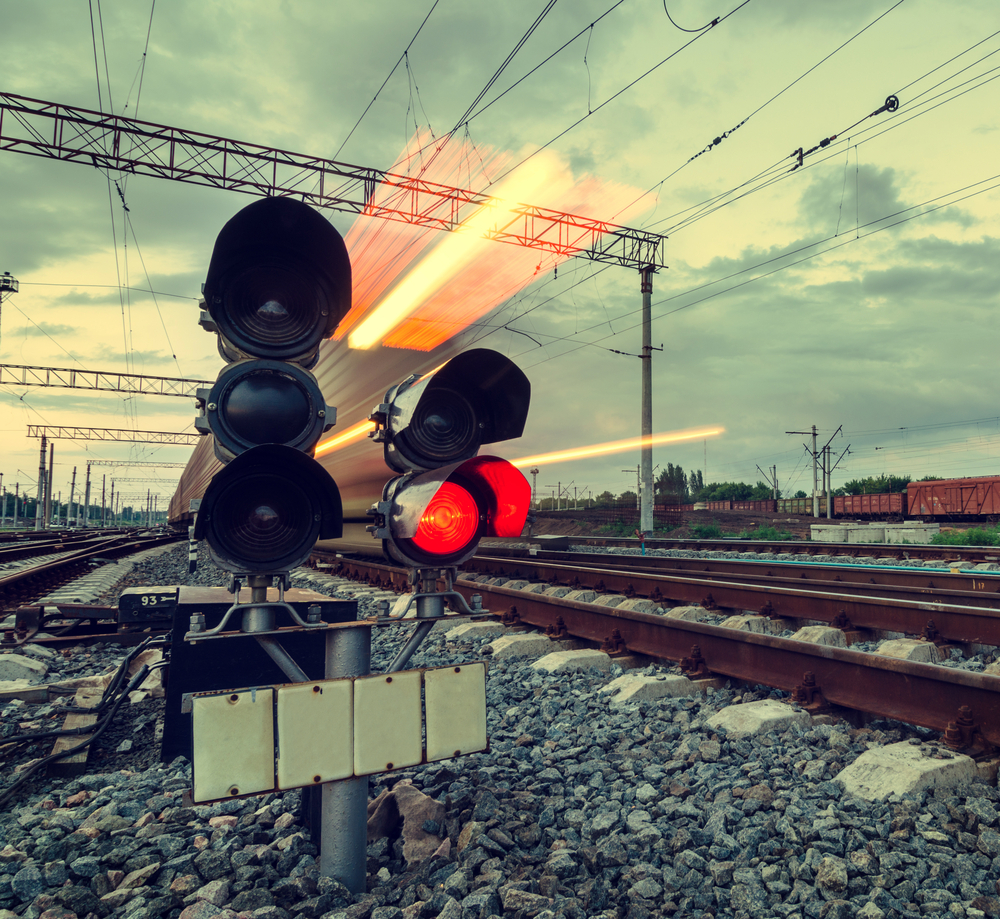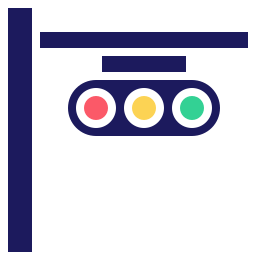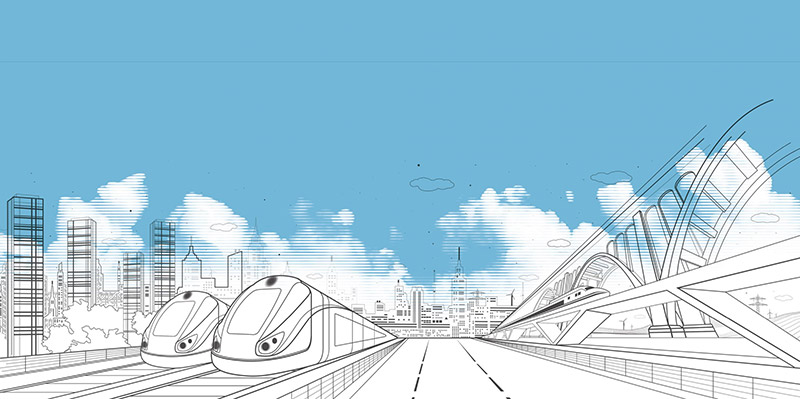We are not only working to make these components more innovative and efficient,
we are also responding to social and environmental challenges.
By choosing rail, a system powered by low-carbon electricity that emits little direct pollution, we are promising to:
- relieve traffic congestion,
- create new connections,
- increase train frequency,
- maintain speedy traffic,
- increase the number of passengers,
- ensure travel lines are robust.
These are significant and timely challenges on which ALTEN teams have been working for several years and which have been accelerated by recent investment plans.
#1. Activating rail’s three links to modernise the sector
These investment plans were especially motivated by the aging of the rail network. It was built on a case-by-case basis according to various lines that were themselves based on old engineering. The challenge is to homogenise rolling stock to create standard ranges.
This condition has led to a lot of changes to infrastructure and signalling, which promises better performance over the entire network. Here is an overview of what ALTEN is doing to help make it a success:

1
Infrastructure: Regeneration time
The “Grand Paris” project, among others in France, has highlighted the need to modernise rail infrastructure.
As a result, ALTEN teams are working on the tracks, the surroundings, and the electrification of the network with the installation of substations, catenaries, etc. The objective is to better cover the French network and improve efficiency in two ways, by maintaining or installing new railway infrastructure, as is the case for example for the creation of the Paris metro lines 15, 16 and 17.
2
Rolling stock: the turning point in technical developments
This activity consists in providing levels 1 and 2 maintenance for stock such as underground trains and regional rail, mainly in the Paris region.
It also includes a design aspect, which goes beyond national borders to other projects in the United States and Germany and covers electronic, electrical, mechanical, system and command control design.
3
Signalling: the key to optimisation
The Group’s teams have developed a whole range of expertise and are capable of intervening throughout the entire engineering V cycle of the development of signalling systems.

The on-board computers in the train and on the ground which communicate together using radio equipment, such as Communication Based Train Control (CBTC)for urban projects (mainly the Paris metro) or the European Rail Traffic Management System (ERTMS) for mainline projects (high-speed trains).
All of them, in their simplest configuration, aim to facilitate the operation of rolling stock on the tracks by supporting the driver with: system monitoring and information on the position of other trains on the tracks.
Pushed to a higher level of complexity, the systems’ purpose is complete autonomy, allowing each piece of rolling stock to benefit from a total safety zone around it.
This results in trains that run more easily, and thus more quickly, in relation to each other, allowing more passengers to be transported.
There are three challenges for ALTEN teams in this activity:
Participate in the specification of these systems, and therefore understand the functional environment to be able to translate it into a technical environment
Develop the software for these systems, i.e. their functionalities: the train location system, opening and closing of doors, acceleration, start-up, stopping, etc.
Ensure these systems are integrated, verified and validated at several levels:
- Validation of the software, its new functionalities, etc.,
- Validation of equipment: on-board, ground, etc.,
- Validation of the proper functioning of the subsystems.
ALTEN engineers have mastered these skills to such an extent that they are involved in no fewer than twenty signalling projects in France and abroad.
#2. Make rail the carbon-free solution of choice for short and medium distances
With standardised ranges of rolling stock, appropriate infrastructure, increasingly innovative and efficient signalling systems, profitability is at the heart of the ongoing rail revolution in terms of the economics, time and the environment.
This is all the truer in the major urban areas, where decongesting road traffic is essential and where we can see that certain rail links are now being made in the record time of two hours (Paris-Bordeaux, Paris Lyon, etc.).
A focus on some concrete examples of ALTEN teams’ work:
“Le Grand Paris”: a regional development project
Decongestion, creating a “rail ring road”, and equipment are all key words that have given this major project for the entire Paris region a social aspect.
The automation and extension of metro line 14 to relieve congestion on line 13 is a good example of this, especially with the multimodal added value that comes with the connection to Orly international airport.
Line 15 of the Paris metro will aim to connect the most far-flung suburbs with the nearest ones, making a complete ring around the Paris region on its own. Finally, the future lines 16 and 17 will add new stops to the north of Île-de-France, where there are currently few aside from the RER B line.
The new East-West train operating system (NexTEO): automating the RER E
Automation is clearly a trend, as demonstrated by the renewal of the French and especially Parisian fleets.
More frequent trains, greater passenger numbers…the added value is significant and recognised by the passengers themselves, who can see the robustness of the extremely safe on-board systems, which seriously limit stops due to signalling.
In the same vein, the urban section of the RER E is being automated, in particular to relieve traffic congestion on the RER A. ALTEN, which has worked hand in hand with its client for more than three years, has developed and is currently validating the on-board and ground computer of the automated system. The software has now been delivered, the equipment tests carried out and the tests on the rolling stock are underway.
A new milestone is being reached in the rail sector thanks to the combination of high-performance infrastructure, optimal signalling and autonomous on-board systems to give a boost to the network.
If we add optimised, electrified or hydrogen-powered rolling stock to this equation (the trend that is currently developing in Italy), it then becomes a winner by combining respect for environmental issues and performance.

